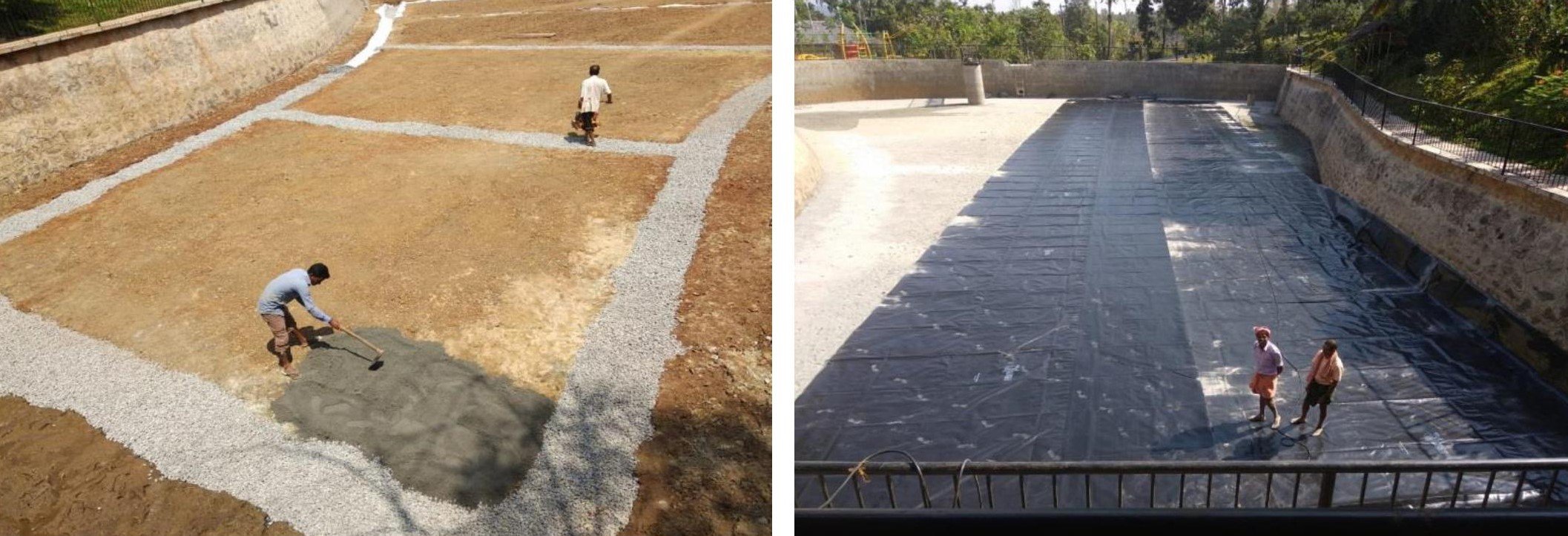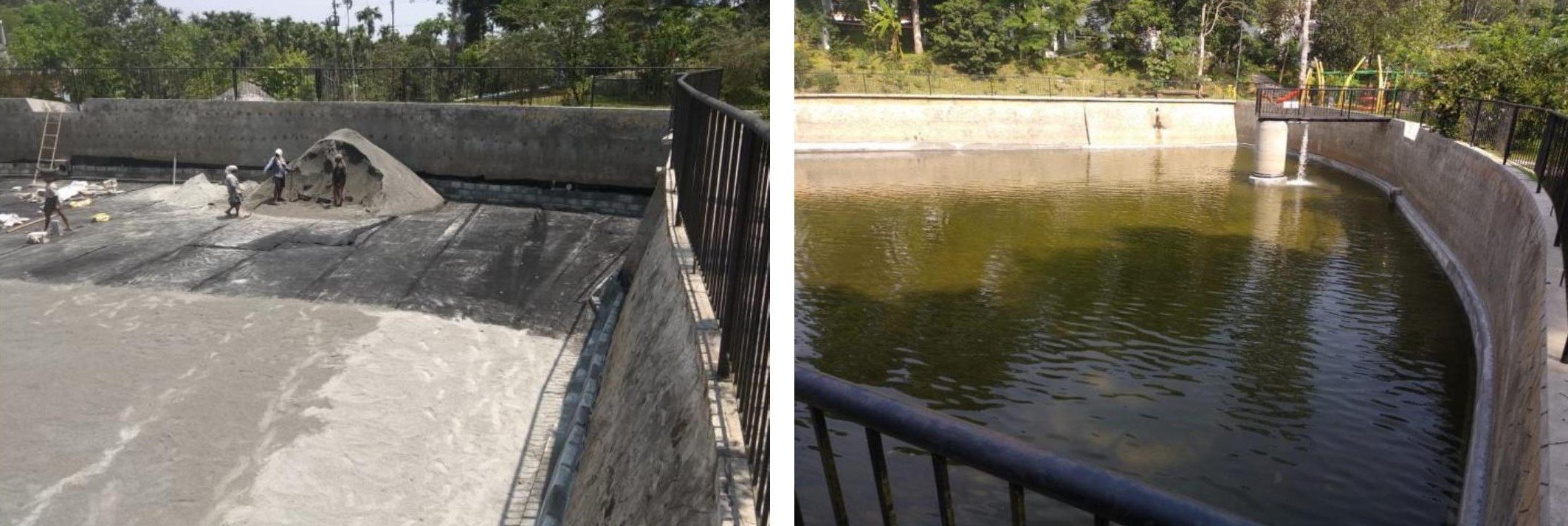The Lake Ecosystem at Sterling, Wayanad
The Sterling property at Sulthan Bathery, Wayanad, an existing property designed and partially built by a previous owner was later taken over by M/s Sterling Holidays.
The project has since then been designed, adapted, upgraded and built under the guidance of M/s Inspiration, the design-build group from Kochi.
The previous owners had attempted to create a lake / waterbody of approx. 1200m2 in extent by creating an RCC check dam across a natural storm water flow; the check dam has a height of approx. 3.50 m. Further random rubble masonry embankments were built on sides.
Though the lake held water during monsoons, since it did not have any impermeable lining (the base was left as natural soil, the stone walls and RCC had several leakage points), once the rains stopped, the lake soon dried up.
Inspiration’s concept:
Under the guidance of their Senior Technical Advisor, Sri V S Venkitachalam, Inspiration took on the task of converting the lake into a perennial water source while causing minimal disturbance to the already built up RCC and rubble walls.
The significant components of the new lake system are the following:
a. Treating the upflow area/ catchment to ensure maximum flow of storm water into the lake: Towards this, the storm water channel within our property has been cleaned up by removing all plant/ shrubs and a smooth slope created. This needs to be maintained as such.
Further a trash rack has been installed to trap large floating matters such as branches of trees from clogging the inlets.
b. Inlet Chamber: The inlet into the lake is a 90 cm diameter hume pipe. The pipe enters the inlet chamber which has an inner dimension of 3 m x 3 m x 2.5 m. Baffle walls inside help to trap the silt in the 1st chamber and let only clean water enter the lake.
The inlet chamber has to be cleaned periodically during and after the monsoons to remove excessive silt.
c. Catchment from within the site and subsurface flows:
c.1. The storm water from the site which flows to the lake (from the roof tops, the gardens and the paved pathways) enters the lake at two points.
c.2. The lake itself has a surface area of approx 1200 m2.
c.3. But significantly higher than both the above catchments is the sub surface water flow that has been channelized to a pumping well at the end of lake with maximum depth.
Being lateritic soil, even during lean monsoons, there can be considerable sub surface flows from up stream areas within and outside our site.
In a normally lined reservoir, such flows are never tapped and in some cases such heavy flows may even cause uplift of the liners.
In the Sterling Wayanad lake, the sub-surface flows which are collected in the well are pumped back into the lake with a set of pumps which work automatically.
With such an arrangement, even during dry spells between rains, there can be substantial quantities of water that can be collected and used to top up the lake.
An observed data during summer of 2019 gave the following figures:
Pumping rate – 15000 liters per hour; one pumping may last only 10 minutes in summer and will take at least one hour to recharge; so maximum 12 pumping per day each of 10 minutes duration will most likely yield around 20000 liters per day.
Average evaporation loss from the lake surface of 1200 m2 at 6mm per day will be around 7.5 cu.m – 7500 liters. Average seepage losses is also assumed to be around the same.
So, we should most likely be able to maintain the water level in the lake with the recharging system.
d. A 24 lakh liter emergency water source: Thus Sterling Wayanad would be having approx. 2400 cu.m (24 lakh liters) of harvested rain water stored in house for emergency use throughout the year. In effect this would be almost 60 days of critical water consumption of the property.
e. Utilising the harvested rain water: During monsoons and as long as there are substantial sub surface flows, the entire water usage for the property can be from the lake.
Overflow from the lake can be utilized to recharge the surface wells. In this way, the property will need to utilize water from the bore wells only during peak summer and thereby not overdraw from deep aquifers.
f. Maintaining the Lake Eco-system: The water lilies and lotuses can be planted in small pots/ confined areas with good soil; because of higher depth, the lilies may take slightly more time to grow.
PROJECT DATA
Scope: Design + Build
Location: Wayanad, Kerala
Timeline: 2019
Client: Sterling Holiday Resorts Ltd.
Collaborators: V.S Venkitachalam





